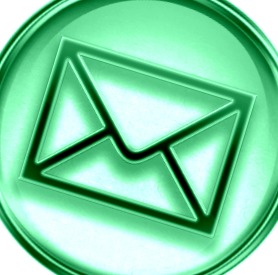Email marketing is seen by some as ineffective even though recent studies have revealed that it is still a useful, valid means of communicating with your customers. It is also one of the least expensive methods of marketing that requires very little effort from your side. The process can even be automated should you wish to make the process even easier. Despite the ease of use and quick contact, there are some rules that you need to be aware of when engaging in the act of email marketing.
Gain permission
This is probably the most important part of email marketing etiquette as there are laws prohibiting one from send unsolicited emails. There are many ways in which people try to circumvent this rule. This can come in the form of sending emails to people who have signed up for a service. The person has to explicitly state that they do want to receive communication from you by ticking a box or something to that effect. By not gaining permission it can be detrimental to any future contact that you may have in the future should you come across this person again.
Have an unsubscribe option
In the same vein as the previous rule, having an unsubscribe option will help weed out those people who have not given permission to receive emails from you. As mentioned before, this is also a point that is implemented by laws. But it needn’t feel helpless when you see someone has unsubscribed as one can add an option where people can tick off the type of communication they want to receive. For example, they might not want the specific emails you have been sending in the past but if they see another option they may have more interest in that communication.
Stick to your unsubscribe promise
When a recipient opts out of your email communication, honor your promise to them. If you do not remove them from the list immediately and they still receive communication, they will have a unfavorable outlook of your company.
Don’t spam subscribers
Giving subscribers regular contact lets them know that you are still there and reminds them every now and then of what you do and why they subscribe. But getting too much email contact from you may be overkill. There is no evidence that too much emailing poses a risk to click-through rates but there is a line you can cross where it becomes spam. To avoid this happening, take the time to test your optimal email frequency. This can become quite technical but there are quite a few guides available on the Internet that will help you do this.
Avoid spammy text
You may not be sending spam emails but if they have walk like a duck and talk like a duck your subscribers might opt-out. When writing email communication be aware of words that sound like spam (even if they may not necessarily be). There are many articles online to help you distinguish between the words.
Re-evaluate mailing list regularly
Check your mailing list for accounts that seem like bots. With enough experience you will be able to spot them quite easily. Also check for soft bounce and hard bounce emails. Soft bounce emails are often caused by a temporary deliverability problem such as a connection timeout while hard bounces often means that it is a permanent problem such as an invalid email address.
Automate just enough
Automated email marketing can save you and your staff a lot of time but they have the potential to start to feel like spam, even if they aren’t. Have a balance between automated and non-automated email messages. Focus on providing non-automated email messages to recipients who are not already invested in your company ideals. Those who have already gotten to know your company needs less nurturing and personal attention than those who don’t know you.
Offer a plain-text version
By offering a plain-text version, you avoid alienating the people who do not know how to render the HTML version. This will give everyone the opportunity to read the information you want them to no matter how they are receiving it or prefer to read it.
Proof-read all emails
No matter how many times you have sent email communication, it does not immunize you from making mistakes every now and then. Have an “outsider” check the email for spelling and grammar mistakes before you send it as you may not see the same things they see because you may have been looking at it for too long. Also, double-check the recipient list before hitting the “send” button just in case you send it to the incorrect list.











